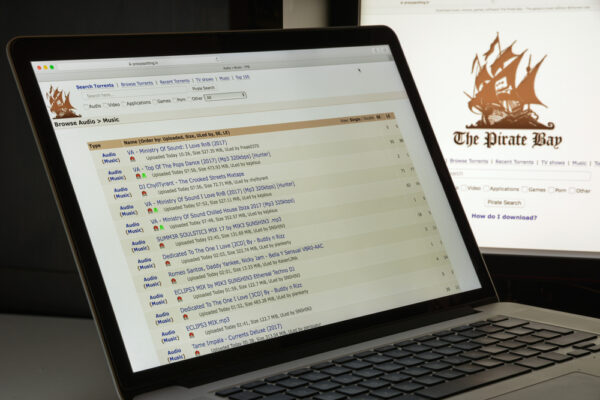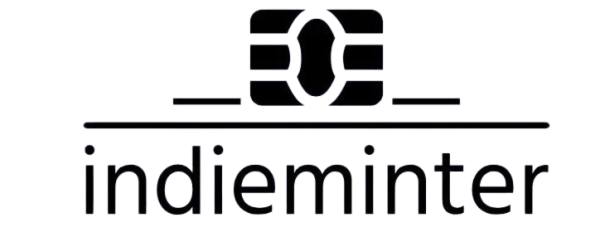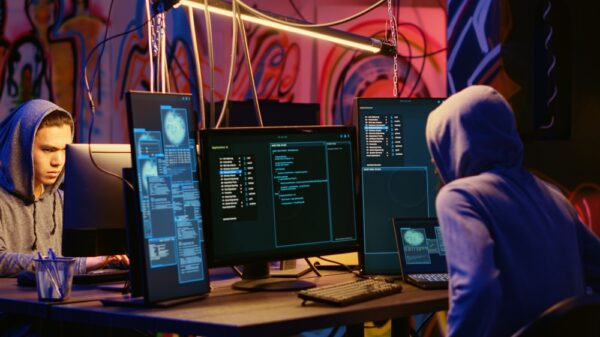Contents
- 1 The Hidden Dangers of Pirated Software Websites
- 1.1 Understanding Pirated Software Websites
- 1.2 The Risks Associated with Pirated Software Websites
- 1.3 Why People Turn to Pirated Software Websites
- 1.4 The True Cost of Using Pirated Software Websites
- 1.5 Alternatives to Pirated Software Websites
- 1.6 Protecting Yourself from Pirated Software Websites
- 1.7 The Future of Software Distribution and Pirated Software Websites
- 1.8 The Impact of Pirated Software Websites on the Software Industry
- 1.9 How Pirated Software Websites Operate
- 1.10 The Psychology Behind Using Pirated Software Websites
- 1.11 Legal Efforts to Combat Pirated Software Websites
- 1.12 The Role of Education in Preventing Pirated Software Website Usage
- 1.13 Emerging Technologies and Pirated Software Websites
- 1.14 Can Free Software Be Pirated
- 1.15 FAQs About Pirated Software Websites And Their Answers
- 1.16 Conclusion: The Clear Choice Against Pirated Software Websites
The Hidden Dangers of Pirated Software Websites

In today’s digital landscape, the allure of free software can be tempting. However, pirated software websites pose significant risks to users and businesses alike. This article delves into the world of pirated software websites, exploring their impact and the reasons to avoid them.
Understanding Pirated Software Websites
Pirated software websites are online platforms that offer unauthorized copies of commercial software for free or at heavily discounted prices. These sites often claim to provide the latest versions of popular programs without the associated costs. However, the reality of pirated software websites is far more sinister than their promises suggest.
The Risks Associated with Pirated Software Websites
Visiting pirated software websites exposes users to numerous dangers:
- Malware Infections: Many files on these sites contain hidden malicious code.
- Data Theft: Your personal information could be compromised.
- Legal Consequences: Downloading pirated software is illegal in many jurisdictions.
- Lack of Support: Pirated software doesn’t come with official technical support.
- Reduced Performance: Cracked software often lacks crucial updates and optimizations.
Why People Turn to Pirated Software Websites
Despite the risks, some individuals still visit pirated software websites. Common reasons include:
- Financial constraints
- Desire to try software before purchasing
- Lack of awareness about the dangers
- Mistaken belief that it’s a victimless crime
The True Cost of Using Pirated Software Websites
While pirated software websites may seem to offer free products, the long-term costs can be substantial:
- System repairs due to malware infections
- Identity theft recovery expenses
- Legal fees if caught using pirated software
- Lost productivity from unreliable or malfunctioning programs
Alternatives to Pirated Software Websites
Instead of risking your digital safety on pirated software websites, consider these alternatives:
- Free open-source software
- Trial versions of commercial software
- Student discounts for educational software
- Subscription-based software services
- Budget-friendly alternatives to premium software
Protecting Yourself from Pirated Software Websites
To avoid the temptation of pirated software websites, follow these best practices:
- Use reputable antivirus software
- Educate yourself about the risks of software piracy
- Always download software from official sources
- Be wary of deals that seem too good to be true
- Support developers by purchasing legitimate software
The Future of Software Distribution and Pirated Software Websites
As technology evolves, so do the methods used by pirated software websites. However, legitimate software companies are also adapting:
- Improved digital rights management (DRM) systems
- Cloud-based software solutions
- Flexible pricing models to accommodate different budgets
- Increased legal action against pirated software websites
The Impact of Pirated Software Websites on the Software Industry

The proliferation of pirated software websites has a significant impact on the software industry:
- Lost revenue for developers and companies
- Reduced investment in research and development
- Increased prices for legitimate users to offset losses
- Potential job losses in the software sector
This ripple effect demonstrates why avoiding pirated software websites is crucial not just for individual users, but for the health of the entire tech ecosystem.
How Pirated Software Websites Operate
Understanding the mechanics behind pirated software websites can help users recognize and avoid them:
- Distribution Methods: Torrents, direct downloads, or streaming
- Cracking Techniques: Bypassing license checks and DRM
- Hosting Strategies: Using multiple domains to evade shutdown
- Marketing Tactics: SEO manipulation and social media promotion
The Psychology Behind Using Pirated Software Websites
Exploring why people are drawn to pirated software websites reveals interesting psychological factors:
- Thrill-seeking behavior
- Perceived anonymity online
- Rationalization of unethical actions
- Peer influence and social norms
Recognizing these motivations can help individuals and organizations address the root causes of software piracy.
Legal Efforts to Combat Pirated Software Websites
Governments and software companies are taking action against pirated software websites:
- International copyright enforcement
- Takedown notices and domain seizures
- Prosecution of major piracy ring operators
- Public awareness campaigns about the risks
These efforts aim to reduce the prevalence of pirated software websites and protect consumers and businesses alike.
The Role of Education in Preventing Pirated Software Website Usage
Educating users about the dangers of pirated software websites is crucial:
- Incorporating digital ethics into school curricula
- Workplace training on software licensing and piracy risks
- Public service announcements highlighting the consequences
- Promoting the value of supporting software developers
By fostering a culture of respect for intellectual property, we can reduce reliance on pirated software websites.
Emerging Technologies and Pirated Software Websites
New technologies are changing the landscape of software piracy:
- Blockchain for secure software distribution
- AI-powered detection of pirated software
- Quantum encryption for enhanced DRM
- Containerization for more secure software trials
These advancements may eventually render pirated software websites obsolete, but they also present new challenges in the ongoing battle against software piracy.
Can Free Software Be Pirated

Yes, free software can be pirated, although it’s less common and the term “piracy” is used differently in this context. Here’s an explanation:
- Definition of free software: Free software typically refers to programs that are distributed under licenses that allow users to run, copy, distribute, study, change, and improve the software. The most common example is open-source software.
- How free software can be “pirated”:
- Violating license terms: Even if software is free, it often comes with a license (like GPL, MIT, or Apache) that specifies how it can be used and distributed. Violating these terms could be considered a form of piracy.
- Misrepresentation: Someone might take free software, modify it slightly, and then distribute it as their own commercial product without proper attribution or adherence to the original license.
- Malicious redistribution: Bad actors might bundle free software with malware and distribute it on unofficial channels.
- Examples:
- Redistributing a GPL-licensed program without providing source code when required.
- Taking an open-source project, rebranding it, and selling it without complying with the original license.
- Modifying free software to include spyware and distributing it as the original.
- Impact: While the financial impact might be less direct than with commercial software piracy, these actions can harm the free software ecosystem by:
- Violating the trust and principles of the open-source community
- Potentially exposing users to security risks
- Discouraging developers from releasing free software
- Prevention:
- Always download free software from official sources or reputable repositories.
- Check the software’s license and ensure you’re complying with its terms.
- Be wary of free software that seems “too good to be true” or comes from unofficial channels.
In summary, while “piracy” of free software might look different from commercial software piracy, it’s still possible and can have negative consequences for both users and the software community.
FAQs About Pirated Software Websites And Their Answers

- What are pirated software websites? Pirated software websites are online platforms that illegally distribute copyrighted software without permission from the original creators or copyright holders. They offer unauthorized copies of commercial software for free or at significantly reduced prices.
- Is it illegal to download from pirated software websites? Yes, downloading copyrighted software from pirated websites is illegal in most countries. It violates copyright laws and can lead to legal consequences, including fines and potential criminal charges.
- Can I get viruses from pirated software websites? Yes, pirated software websites are notorious for distributing malware, viruses, and other malicious code. The risk of infecting your device with harmful software is significantly higher when downloading from these sites.
- How do pirated software websites make money? Pirated software websites often generate revenue through advertising, cryptocurrency mining scripts, selling user data, or even distributing malware for profit. Some may also charge for premium access or faster downloads.
- Are cracked software and pirated software the same thing? While often used interchangeably, cracked software refers specifically to programs that have had their digital rights management (DRM) or copy protection removed. Pirated software is a broader term that includes cracked software and other illegally distributed programs.
- What happens if I get caught using pirated software? Consequences can vary but may include legal action from software companies, fines, computer confiscation, and in some cases, criminal charges. Businesses using pirated software may face additional penalties and reputational damage.
- Can pirated software be detected on my computer? Yes, many software companies use activation and validation processes that can detect pirated versions. Additionally, some organizations conduct software audits to ensure compliance, which can uncover pirated software.
- Are there any safe pirated software websites? No, there are no safe pirated software websites. All sites distributing copyrighted software without permission are engaging in illegal activities and often employ deceptive or harmful practices.
- How do software companies combat pirated software websites? Software companies use various methods including legal action, improved DRM technologies, offering more affordable options like subscriptions, and working with law enforcement to shut down piracy operations.
- What should I do if I’ve accidentally downloaded from a pirated software website? Immediately disconnect from the internet, run a full system scan with up-to-date antivirus software, uninstall any suspicious programs, and consider resetting passwords for important accounts. If concerned about legal issues, consult with a legal professional.
Conclusion: The Clear Choice Against Pirated Software Websites
In conclusion, the risks associated with pirated software websites far outweigh any perceived benefits. By choosing legitimate software sources, users protect themselves, support innovation, and contribute to a healthier digital ecosystem. As technology continues to evolve, staying informed and making ethical choices regarding software use becomes increasingly important in our interconnected world.
Remember, the true cost of using pirated software websites extends beyond immediate financial savings. It impacts personal security, legal standing, and the broader tech industry. By avoiding these sites and embracing legitimate alternatives, we can all play a part in creating a more secure and sustainable digital future.





